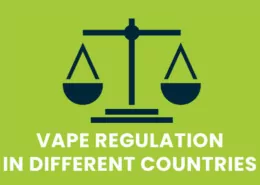UK Vape Taxes: What Retailers Need to Know and How to Prepare
On 6th March 2024, Jeremy Hunt delivered a blow to UK vape businesses by announcing a vape excise tax on e-liquid, set to take effect on 1st October 2026. The extent and complexity of the tax surprised many, despite rumors of its introduction. This article explores how the tax will work, its potential impact on vape businesses, and strategies for retailers to navigate the changing landscape.
Understanding the Vape Tax Structure
The vape tax will only apply to e-liquid at present, as the government believes the ban on disposable vapes negates the need to tax devices. The tax is not based on the value of e-liquid but on the amount of nicotine per ml that a bottle contains.
The tax levels per 10ml are as follows:
- 0mg nicotine: £1.00
- 0.1-10.9mg nicotine: £2.00
- 11-20mg nicotine: £3.00
The tax will be levied at the point of import, manufacture, or when the e-liquid leaves an HMRC-registered factory or registered warehouse that has agreed to a suspension of duty. Retailers who do not import or manufacture e-liquid will not need to collect or pay the tax.
Potential Impact on Vape Businesses
Cash Flow Challenges
One of the biggest challenges for vape businesses will be the immediate cash flow impact after the tax introduction. For every bottle of e-liquid restocked, retailers will need to pay an extra tax, averaging around £2.50 or slightly lower. However, the tax will be collected from the manufacturer or supplier, not the retailer, and will not apply to products manufactured before 1st October 2026. Retailers can mitigate this by stocking up on e-liquid before the tax introduction.
Black Market and Theft Concerns
The increase in e-liquid prices may lead to increased demand for black market alternatives, potentially increasing profits for criminals and illegal sellers. Retailers should review and improve their security systems in the run-up to the tax implementation. Bonded warehouses and a potential track and trace system may help mitigate these risks.
Shifting Consumer Trends
The tax aims to influence vapers to move towards lower nicotine e-liquids. However, research shows that when vapers lower their nicotine levels, they tend to vape more, potentially increasing e-liquid consumption. Vapers may also shift towards 50/50 shortfills, which will be more cost-effective than premixed e-liquid post-tax.
Potential Demand Changes
Research suggests that increases in vape taxes can lead to reduced vaping and increased smoking. The government has attempted to account for this by increasing the duty on cigarettes, but their assertion that 10ml of e-liquid is equivalent to 100 cigarettes is incorrect. Alternative nicotine products, such as Heat Not Burn or nicotine pouches, are not currently included in the regulations, which may lead to a shift in consumer preferences.
Brand Consolidation
The increased expense of introducing e-liquids for both manufacturers and retailers may lead to a more risk-averse approach to selecting brands. Fewer new vape juice brands will likely succeed, consolidating the market around existing well-known e-liquid brands.

Potential for Tax Adjustments
The vape tax legislation appears hastily written, with errors and omissions in the consultation. The government is running a consultation on the vape tax, providing an opportunity for industry bodies and businesses to correct assumptions, such as the equivalence of 10ml e-liquid to 100 cigarettes.
The existing government could also be replaced by Labour prior to the tax implementation. A new government may take a different approach to vaping taxation, providing an opportunity for the industry to engage with policymakers and advocate for a more reasonable regime.
Also Read:
UK Considers New Tax on Vaping Products
Conclusion
While the vape tax presents a frustrating and unwelcome challenge for businesses and harm reduction efforts, it is not the end of the industry. Vaping has faced numerous threats over the years, from attempts at medicalization to attacks from the WHO and the implementation of the Tobacco Products Directive, yet it has persevered.
The industry must engage with the government to push for a fairer tax regime based on sensible premises that work for businesses and customers alike. Retailers should consider joining industry bodies such as the IBVTA to stay informed and compliant with vape legislation.
Despite the challenges ahead, the vape industry has proven its resilience time and again. By adapting to the changing landscape, advocating for fair regulations, and prioritizing the needs of consumers, vape businesses can continue to thrive and provide a valuable alternative to traditional tobacco products.
- HHC Vapes: What Are They & Are They Safe? - July 31, 2025
- Cannabis and Vape Shop Workers Rank Happiest in Nation - July 31, 2025
- Richmond, VA, Restricts New Vape & Tobacco Shop Locations - July 31, 2025








